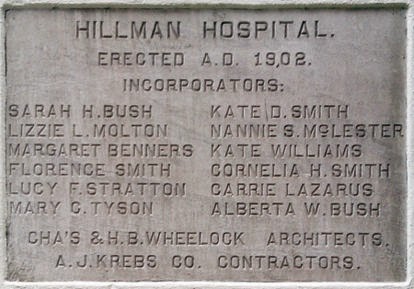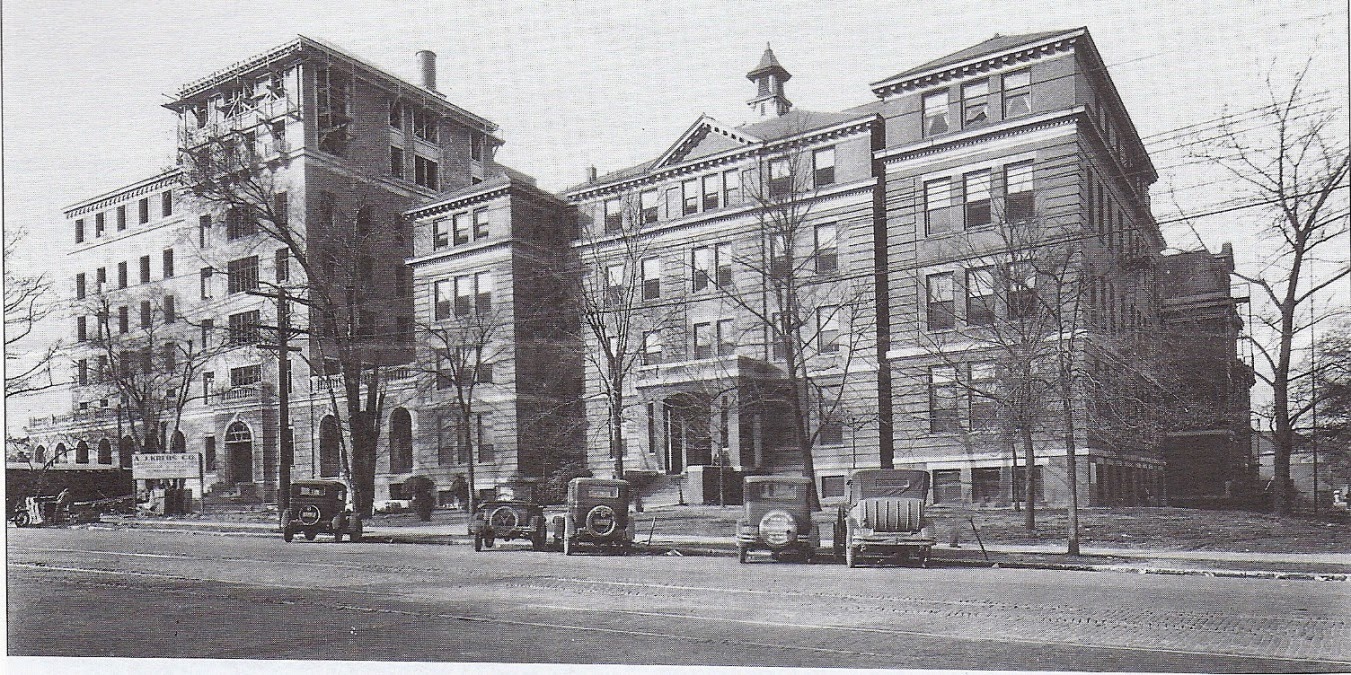On May 8, 2010, in a ceremony in Montgomery, Alice McNeal,
M.D., was inducted into the Alabama Healthcare Hall of Fame along with
other members of the 2010 class of honorees. Dr. McNeal became the second
anesthesiologist inducted; Robert A. Hingson, M.D., in 1999, was the first.
The
Hall of Fame was established in 1997 “to recognize those persons, living or deceased, who have
made outstanding contributions to, or rendered exemplary service for healthcare
in the State of Alabama.” Past honorees have included such
well-known medical figures as Peter Bryce, William Crawford Gorgas, James D.
Hardy, Seale Harris, Tinsley R.
Harrison, Sr., Luther Leonidas Hill, Basil I. Hirschowitz, John W. Kirklin,
Josiah C. Nott, Lloyd Noland, David Satcher, and J. Marion Sims.
In September 1945, the first class
of students began their studies at the Medical College of Alabama in
Birmingham. This four-year school had replaced a two-year program in Tuscaloosa,
and thus students no longer needed to leave Alabama to obtain a medical degree.
The demands of creating this school quickly and almost from scratch led DeanRoy Kracke to open a few opportunities for female physicians. When the school
opened, Dr. Melson Barfield-Carter, an Alabama native who had practiced
radiology in the city since 1929, was named Professor and Chair of the school's
Radiology Department. Three years later, Dr. Alice McNeal became the second
female department chair at the Medical College.
Alice
McNeal was born in 1897 in Hinsdale, Illinois. She graduated from Rush Medical
College in Chicago in 1921, and during the next two years completed internships
at Women's Hospital in Philadelphia and Durand Hospital in Chicago. In 1925 she
began a stretch of twenty-one years as Anesthesiologist and Instructor in
Anesthesia at Presbyterian Hospital in Chicago. During this period she
completed a residency in anesthesia under Huberta Livingstone in 1926 and a
second residency under Ralph Tovell in Hartford, Connecticut, in 1938 and 1939.
Dr. McNeal was certified by the American Board of Anesthesiology in 1941.
McNeal in 1921, at the time she received her Rush MC
certificate
She received her M.D. the following year, one of 5
women among 129 total graduates
Source: Rush-Presbyterian-St. Luke’s Medical Center
Archives [Chicago]
During World War II McNeal was active in the effort to bring female physicians into the U.S. armed forces. Women doctors had not been allowed to enlist in World War I; they could not yet vote and thus were not "citizens". A few were allowed to be "contract" physcians during that conflict. McNeal and Dr. Virginia Apgar led the effort in World War II; in April 1943 the Sparkman-Johnson Bill passed Congress, and women were allowed to enlist.
By early
1946, Dean Roy Kracke needed a Chief of Anesthesia for the hospital of the new
medical school. Apparently John Adriani, a prominent anesthesiologist at
Charity Hospital in New Orleans, was offered the position but declined. By May
of that year Dean Kracke had persuaded Dr. McNeal to accept the post, and she
arrived in Birmingham to become an Assistant Professor of Surgery and Chief of
the Surgery Department's Anesthesia Division. In August 1948, Dr. McNeal was
named Chair of the newly created Department of Anesthesiology and remained in
that position until stepping down in
1961. She retired the following year. Dr. McNeal died on December 31, 1964.
In October
1946 Dr. McNeal began organizing a School of Nurse Anesthetists at the
hospital. In the spring of 1948 she was one of four founding members--and the
only female--of the Alabama State Society of Anesthesiologists. As a result of
her efforts, the department's residency program was certified by the American
Board of Anesthesiology in February 1949. In that same year, under the auspices
of the International Refugee Organization, Dr. McNeal made a nine-week trip to
Munich, Germany, and lectured to some 150 local physicians on modern medical
practices. She served as President of the Southern Society of Anesthesiologists for 1956-57.
Dr.
McNeal’s professional career had two phases. At Presbyterian Hospital in
Chicago, she worked under Dr. Isabella Herb and two other female
anesthesiologists, Drs. Nora Brandenburgh and Mary Lyons. By the time she
arrived in Alabama, she already had 21 years experience in anesthesia. In her
new home, she found herself to be not only one of the few female physicians but
one of the few physician-anesthesiologists in the state. In the early years,
she coordinated anesthesia administration at the university's busy hospital
(formerly the county hospital in the state's most populous county) with help
from a few nurse anesthetists, an occasional resident, and sometimes a dental
student doing an anesthesia rotation. By 1950 her department coordinated 9700
anesthetics a year at the hospital.
Dr. McNeal presents the Chief Resident’s Chair to Patricia
F. Norman, M.D. in 1959. This tradition continued in the department into the early 1990s.
She is remembered fondly by those
who knew her; former UAB President Dr. Charles McCallum's comment that she was
"a great teacher, well-liked, and worked hard" is typical. Dr.
McCallum also said “She loved to dance.” [Source: my interview with Dr. McCallum in 1992] Jim Jones, M.D., a faculty member in her department from 1958 until
1960, remarked that “She dearly loved fine conversation, classical music and
well-written books…and good scotch!” Dr. Jones also noted, "Alice in an interview shortly before her demise, denied being a pioneer but did admit to being perhaps a veteran in the field of anesthesiology." [Sources: written tribute by Dr. Jones, December 1971 and my interview with him in March 1996]
Former UAB President S. Richardson Hill, Jr., told me in a letter in June 1993 that "I liked her very much and thoroughly enjoyed her company...my wife was also very fond of her, and occasionally on special occasions they exchanged presents. At one time Alice gave my wife a beautiful pocketbook which she had made."
Unfortunately, Dr. McNeal committed suicide on New Year's Eve 1964. She had stepped down as Chair of the department in 1961, although she remained on the faculty for a year or so after that. McNeal was an only child; her parents were long dead, and apparently she had no reason to return to Illinois. Her body was cremated, but a gravestone for her can be found in Birmingham's Elmwood Cemetery. There the spirit of this stranger in a strange land rests along with many other individuals prominent in Alabama history.
Although she published only two
research papers, Dr. McNeal created the foundation for academic anesthesia in the
state by chairing the first department for so long, providing excellent patient
care and many clinical improvements, and training so many anesthesiologists,
dentists, and nurses. Dr. McNeal is thus an important figure both in the
history of the state's medical education and its female physicians as well. She
was the first female anesthesiologist in Alabama, and one of the first females to chair of an academic anesthesia department in the United States. In 1998 the
University of Alabama Board of Trustees established the Alice McNeal, M.D.,
Endowed Chair in Anesthesiology in her honor.
Dr. McNeal and others in the Hill Heart Suite, Medical
College of Alabama, Birmingham in the early 1960s.
Source: Alvin Bearman, M.D. [one of her last residents]
Two photos of Dr. McNeal during her time at UAB.
•Ca. 1922
•Graduated MC Phi Beta Kappa and AOA
•Woman on right may be her mother
•Photo taken in back yard of family home?
Source: Fran Watkins, long-time CRNA at UASOM
Anesthesia Staff, Presbyterian Hospital, 1936
•Nora Brandenburgh, M.D.
•Alice McNeal, M.D.
•Mary Lyons, M.D.
•Isabella Herb, M.D.
•Spring 1936
Source: Bulletin, Presbyterian Hospital,
April 1936
Anesthesiology 11: 96, 1950 [Department’s first publication]
Julie Cole Miller has written a very nice profile of Dr. McNeal with some additional photos that is available here.































